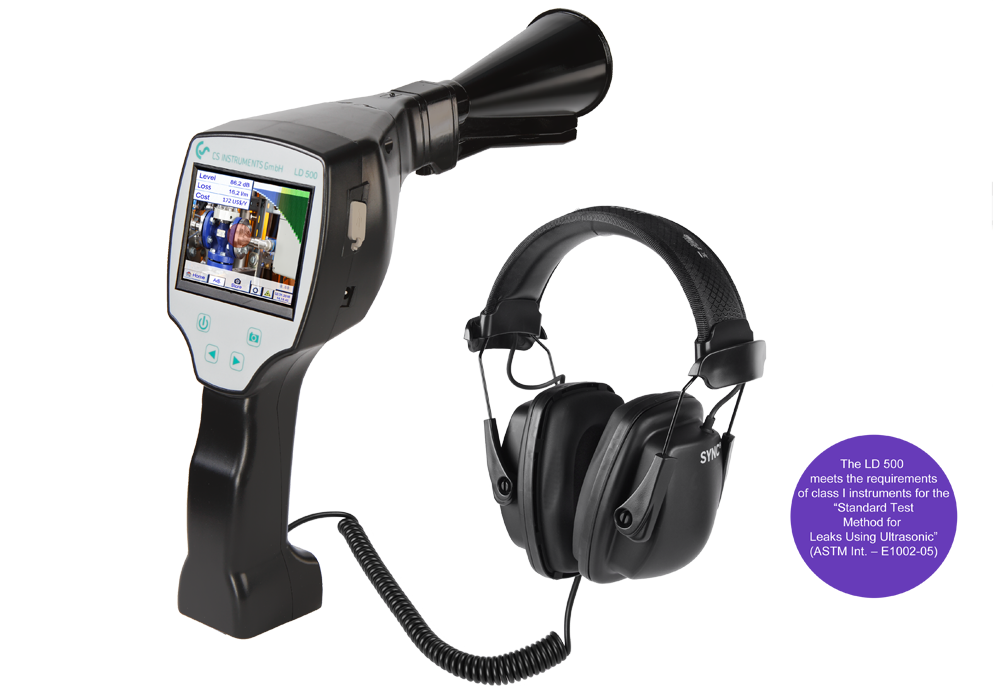
LD 500/LD 510 leak detection devices
In addition to reliable Leak detection, our starter set for Leak detection also enables Leak calculation and reporting in accordance with ISO 50001 thanks to the integrated camera and the included accessories.
Our 20 years of experience in Compressed air / gases leak detection has taught us that no system is perfect - neither during installation and even less during operation. For compressed air systems, perfection means first and foremost that it is 100% free of leakages.
We continuously test all our products in order to constantly improve them. We carry out thorough tests under real-life conditions to ensure that our customers always achieve the best results. A recent example is our new compressor station in our compressor room, which was recently installed. The new installation gave us the ideal opportunity to use our latest Leak Detectors and accessories (in this case the Gooseneck and the Ultrasound Camera) ourselves.
Surprisingly, leakages occurred in three different places immediately after installation:

The compressed air leakages mentioned above are typical examples of transient installation defects, highlighting the demanding challenge of ensuring the tightness of compressed air systems. Even the smallest gaps can lead to significant compressed air loss.
Another known leak occurred in the main line of the catalytic converter (see following video). As the catalytic converter is in operation around the clock, the leakages shown in the video below could not be repaired immediately. This shows a common problem in compressed air technology: the uninterrupted supply of compressed air to production usually has the highest priority, which means that leakages cannot be repaired immediately despite known problems.

Leakages can already occur during planning and installation. Common causes are
Even a perfectly installed and tested system will leak over time under operating conditions:

The Gooseneck offers a precise and flexible addition to the Ultrasound Camera:
Conclusion: Precision and efficiency for your Leak detection
Our tests in the new compressor station have impressively demonstrated how effective the combination of Ultrasound Camera and Gooseneck is. While the camera provides a quick overview, the Gooseneck enables precise inspection in hard-to-reach areas. This practical experience emphasises the importance of regular inspections - both immediately after installation and during operation.
Reduce energy losses and lower your operating costs. Contact us for a no-obligation consultation!